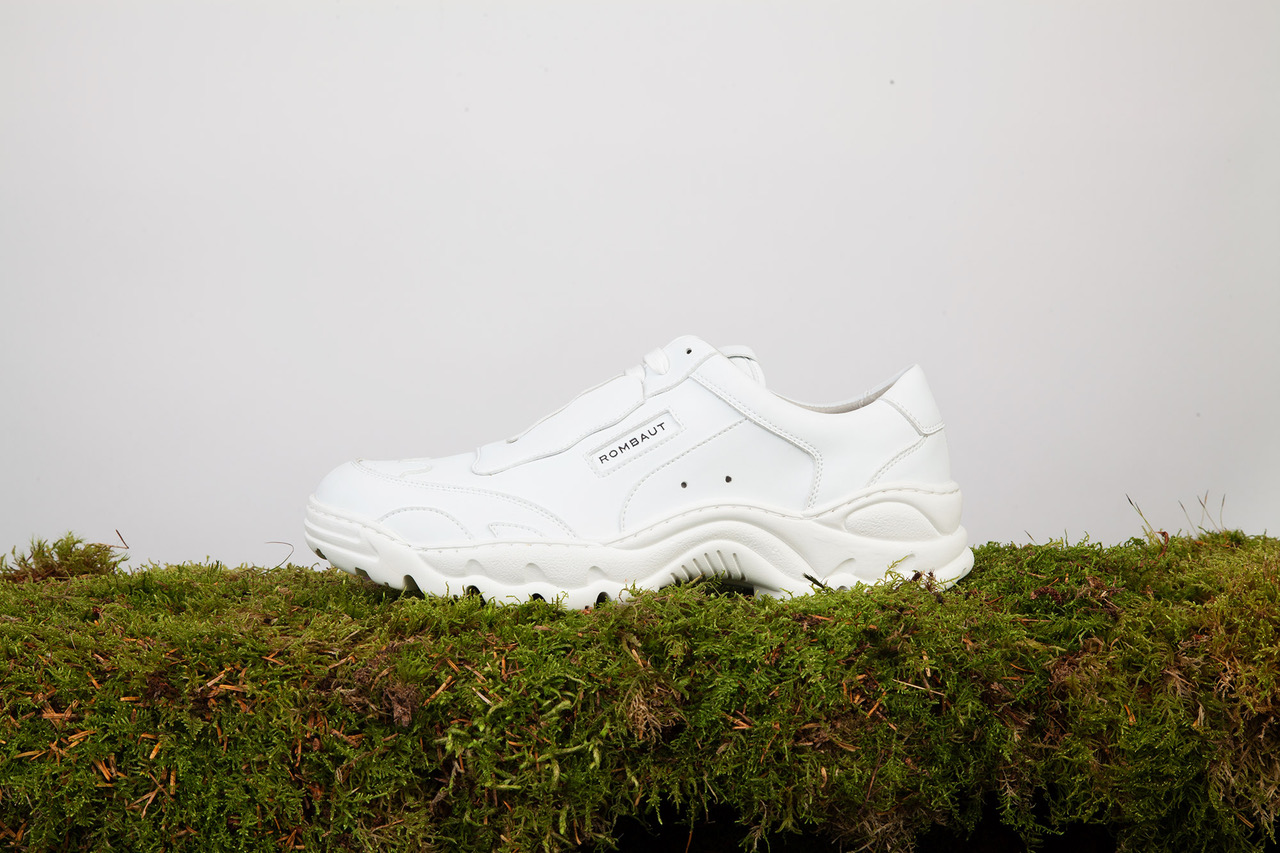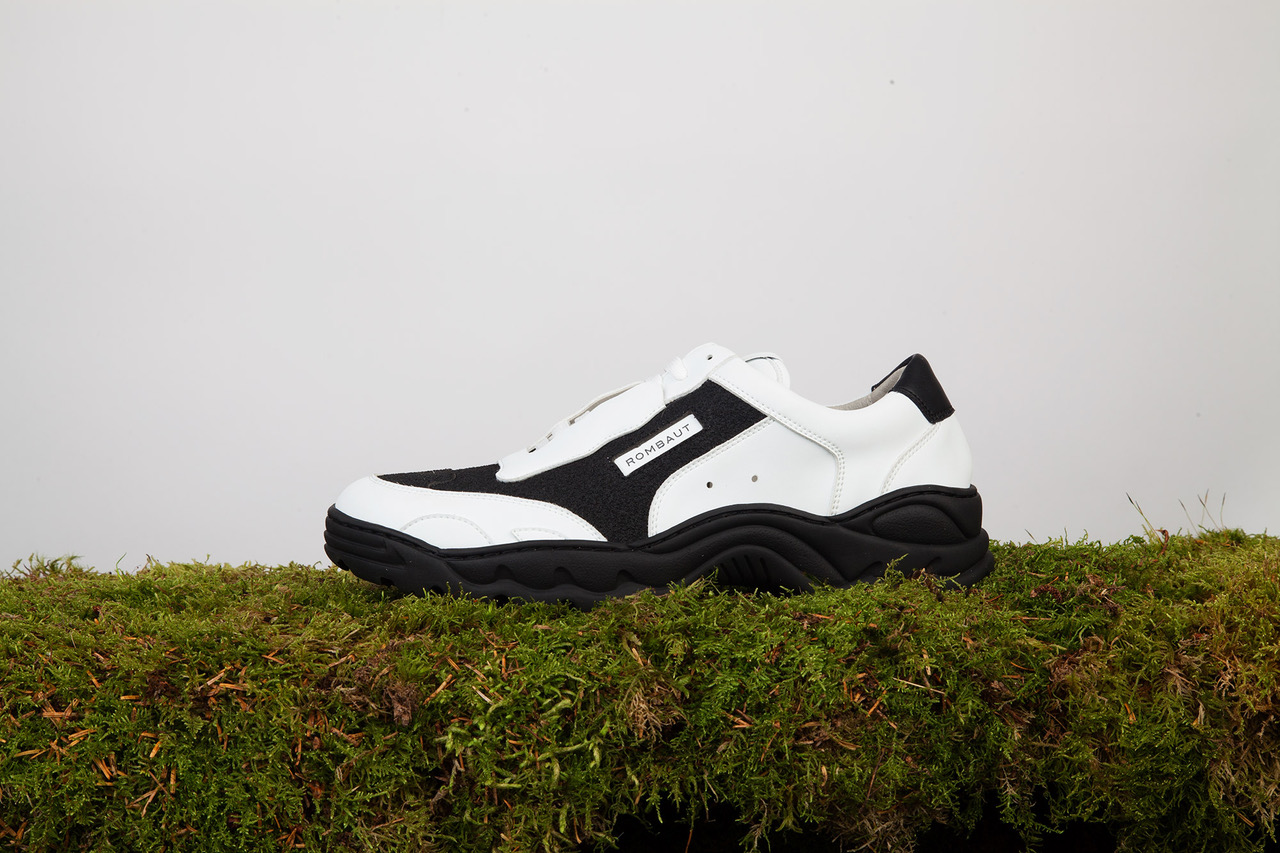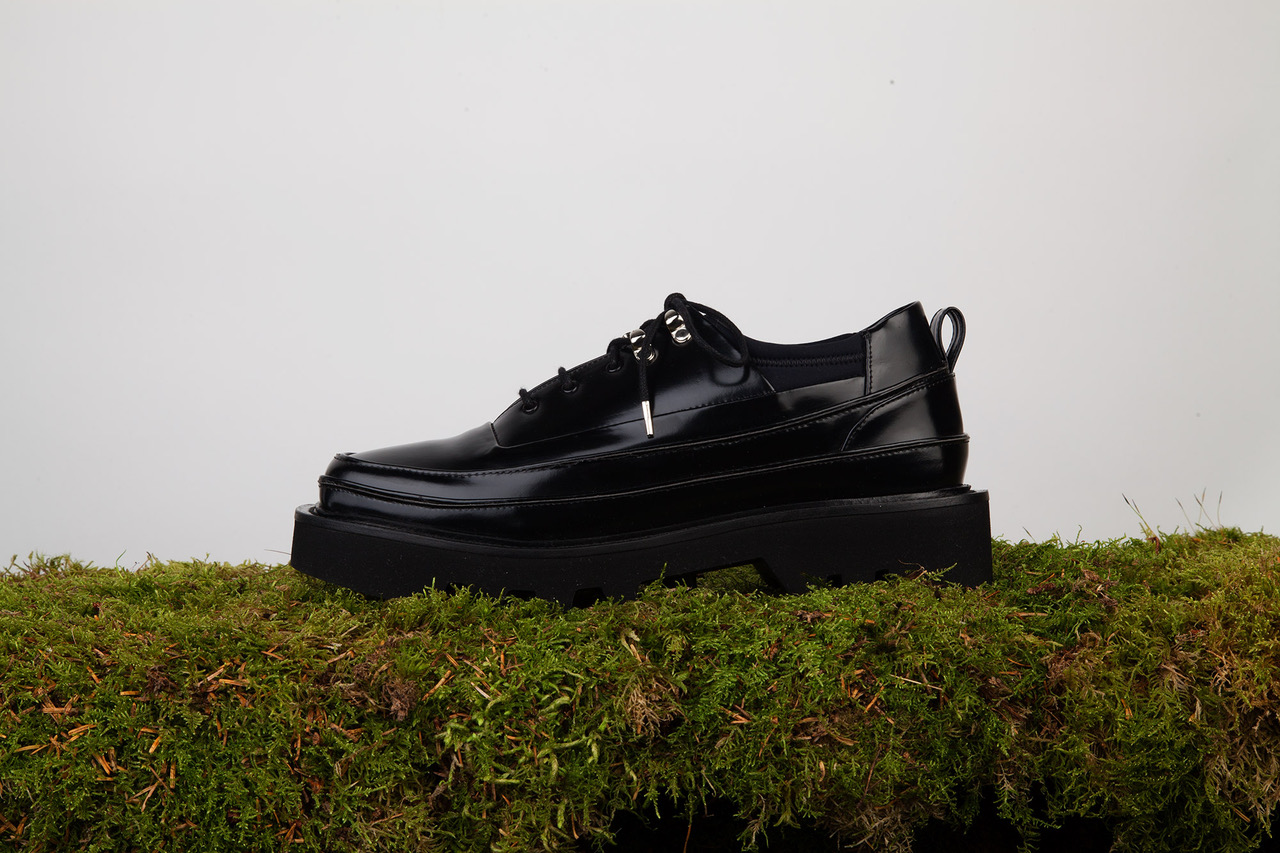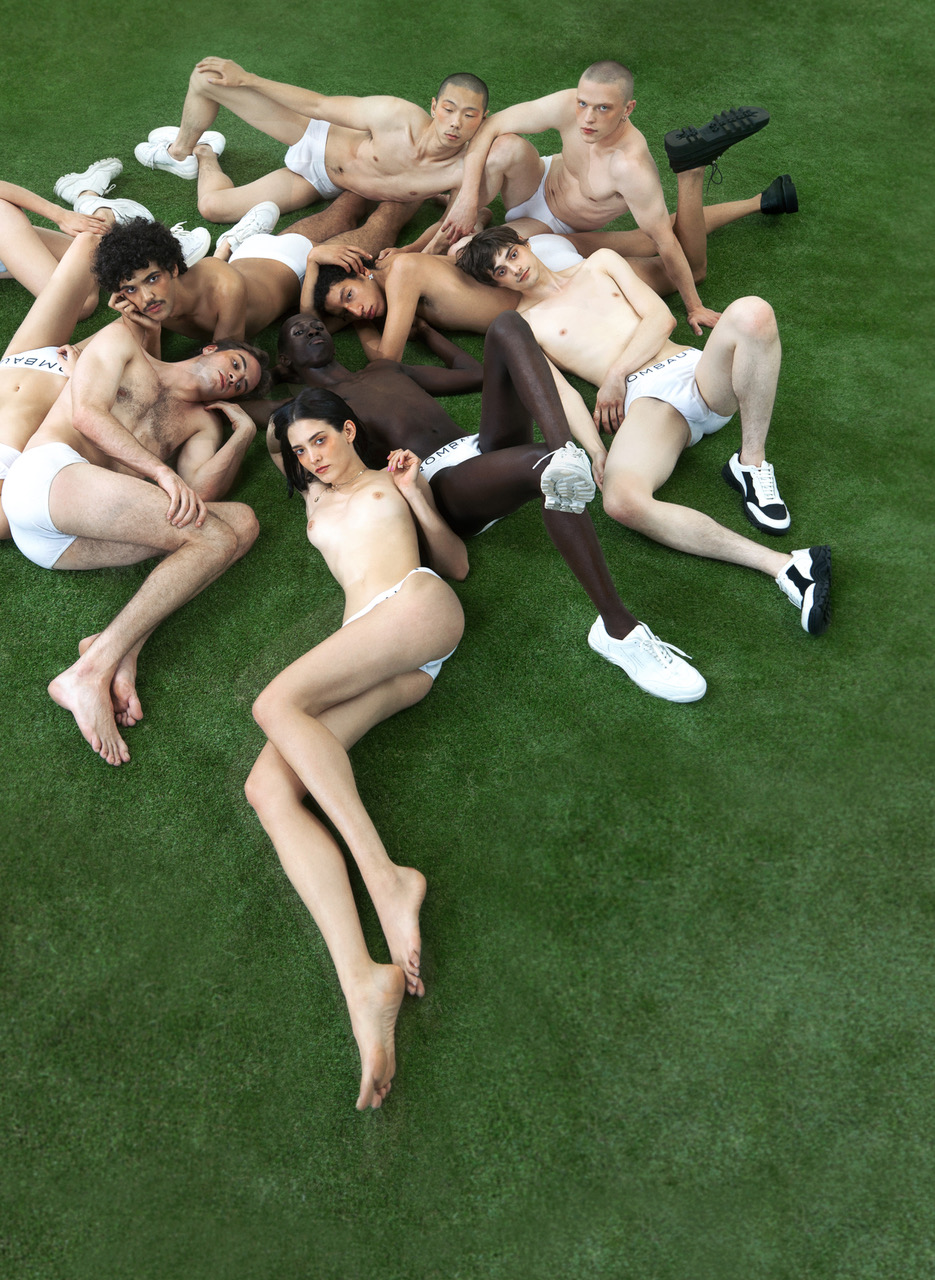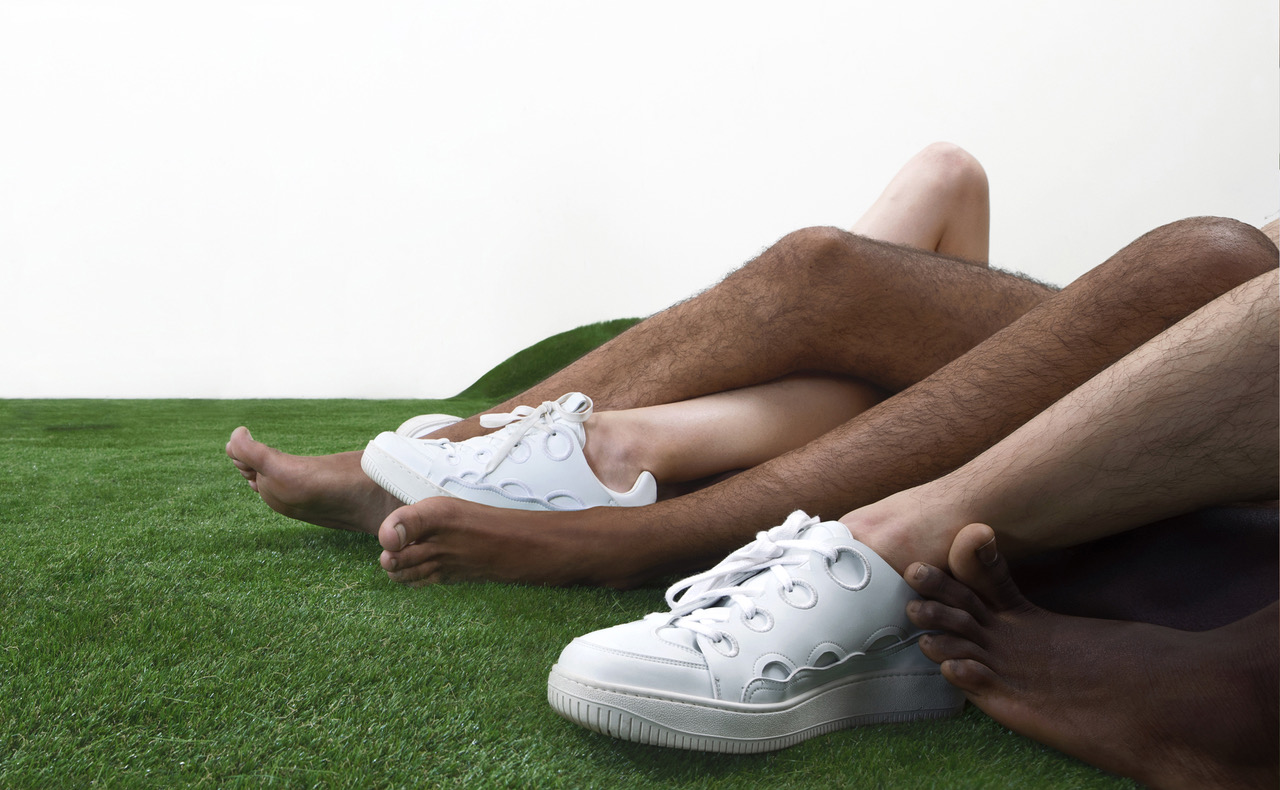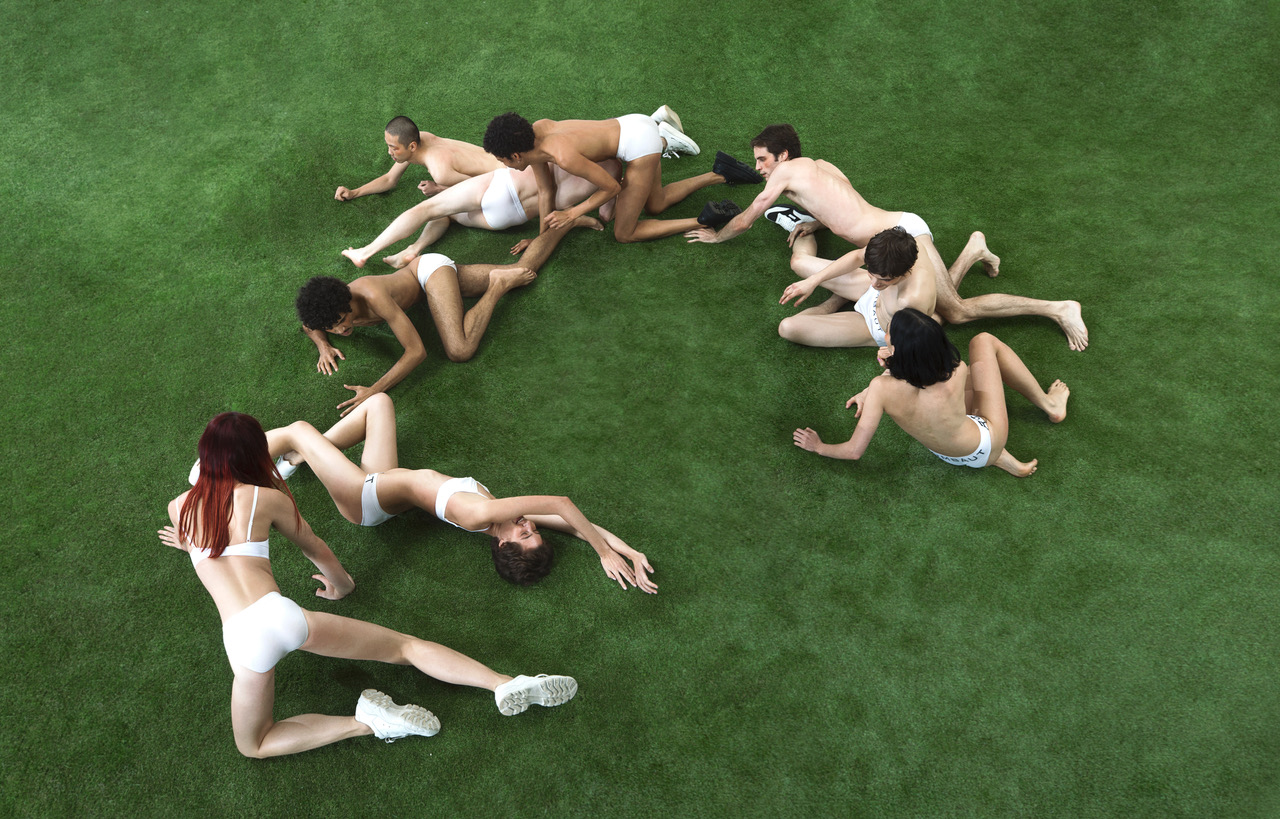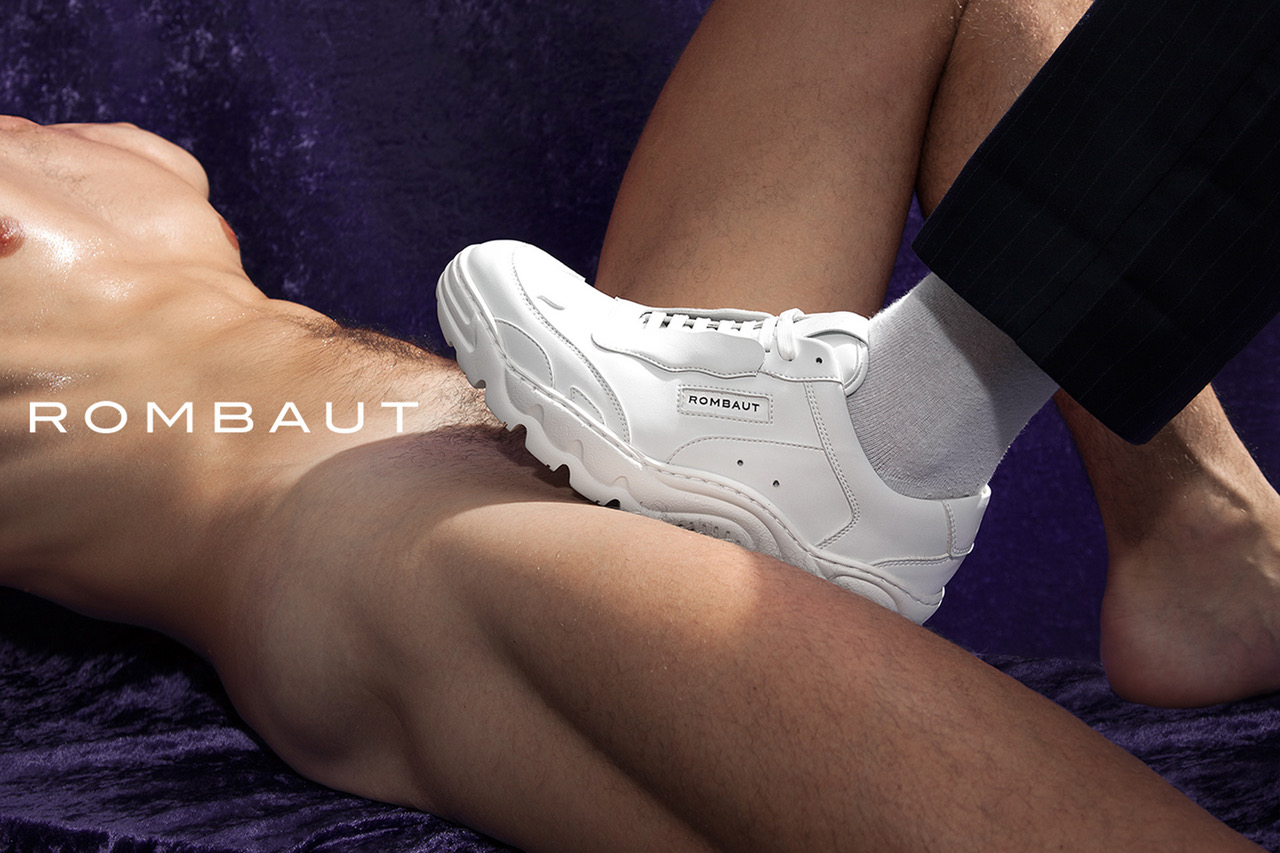Both Feet Forward: A Conversation with Mats Rombaut
Using life-friendly material innovations, Belgian shoemaker Mats Rombaut is looking forward to the footwear for a society years ahead into the future.
You began your career working in accessory development and production at Lanvin and Damir Doma. How did this exposure to the mechanics of esteemed brands help to shape you as a designer?
I had gone to design school in Barcelona but I left after about five months – it wasn’t a very good school and the pace was very slow, so I decided to move to Paris to be in a more serious fashion environment. I basically learned everything at Lanvin, it was all new to me. It was a real privilege to be there and to work with talented people and to see how the whole process works, especially how to communicate with suppliers and how people communicate within a company. As a student you don’t learn how to work within these rules and politics.
When I moved on to Damir Doma the brand was very young, less than two years old, and the team was understandably inexperienced. At that time they were only doing menswear, but right away we added womenswear and the diffusion line Silent. We were only eight people, so it was a massive workload, but that was great because I learned how to work well under pressure and apply what I had learned at Lanvin. I dedicated all of my time to that and I really loved it. Of course, in any company there are difficulties. There was a high turnover of staff, every few months someone would go. I was there for three years and I was there the longest time. Because of that, I was given more responsibility. I would often travel to the factories in Italy where I had a lot of hands-on work experience, especially with the technicalities of shoes and accessories which I was responsible for. I dealt with all pieces with leather and fur, which of course was everything I didn’t really believe in (laughs). But that taught me to always communicate with factories and to build a bond with them. This is how I was able to eventually start my own brand because I had a good connection with the factory and they told me if I ever wanted to do something on my own that they would help me make my first prototype.
Is that why you made the decision when building your brand to design exclusively footwear, or was that your intention all along? It’s absolutely an ambitious route to take.
I always enjoy a challenge. I knew that I wanted to start a brand of shoes, handbags, or suits—I was also responsible for suits at Damir Doma—and I wanted to spread the message of veganism. I thought it would be most effective to attempt that through shoes and bags, when there were not many vegan options available that were fashionable. You can design suits without wool to make them vegan, but it’s less groundbreaking than making shoes out of alternative materials. I have always loved shoes and find the variety in construction very interesting; it’s kind of the most complicated garment in the menswear closet. So the decision was a combination of both.
Is it true that your father and grandfather were shoemakers as well?
Actually, this has become a common misconception in the press. The thing is, my great, great grandfather was a clog maker, nothing fancy. It was during the war in Belgium and he simply supplied clogs for the people in his village. I did some research about it to see if there was an interesting angle, but not really.
Which came first, the choice of designing footwear or the choice of being a vegan brand?
First and foremost, I wanted to create something sustainable and eco-friendly. I became vegan after watching videos on the negative impact of agriculture on the environment. When I started Rombaut, I did research to find a way to be non-polluting. In the beginning it was very extreme, I made no compromises; I used only plant-based fibers, but in the end it was a very expensive product and could fall apart very easily because of technical issues that come from using solely natural fibers. I had to adapt the concept, and although the shoes were no longer biodegradable, they became more fashionable and less expensive – a product that people would want to buy. The one thing that Rombaut will always be is vegan, for ethical reasons – it’s something I really believe in and that will always be the case. I think that technology will progress very quickly in the coming years, maybe we’ll have alternatives to leather that may be synthetic but are biodegradable and won’t leave a footprint.
Let’s talk materials: what goes into creating a plant based shoe? Where do you source your materials and have they evolved over time?
For the first two collections I used tree bark, which came from Uganda via an importer in Germany; I went there to check the quality and select the bark myself. I coated the bark in a natural rubber mixed with natural pigments sourced from various plants and trees. I used bio-cotton for the lining and materials from Malaysia for the soles. On one hand, these are all natural and biodegradable, but they come from different parts of the world, so I had to consider the aspect of getting them to Italy where all of the shoes were assembled.
Yes, the materials evolved in the seasons after – I used quite a lot of cork, and there was a material made out of coconut fiber I used for the insoles which is actually really good cushioning. Almost all of my materials are sourced from Spain and Italy, and there’s one company in London that produces something called piñatex, a pineapple fiber in which all of the fibers are pressed together and then coated. It looks a bit like leather, but not quite; its texture is very interesting. Now I use polyurethane the most. It really looks like leather and it’s more durable, so it’s what people buy.
Do you think other fashion brands will have to evolve in a green direction in the future as well? What do you think will be their motivation?
For sure, in different ways. There are regulations overseen by the EU for fashion brands about what chemicals they can use and how much pollution they produce. I think these will become more and more regulated. On the other side, you have innovations in terms of materials that will happen, making them more green. Because we have to, there’s no way around it. All of the plastic that has been made since the beginning is still on the planet because we don’t know how to get rid of it. I think we’re moving in the right direction—not necessarily for the right reasons—but we are. There’s a lot of miscommunication right now because companies use [going green] as a sales tool, so they start to label everything as eco-friendly or sustainable, like supermarkets that label items as bio but they aren’t really, it’s just the label they put on them. The media has been talking about it for years now, but no action has really being taken. Big brands are noticing now that change and opportunity will come.
Would you say that you had an advantage being a vegan footwear brand, or was it more difficult to promote your brand on a large scale when your initial clientele is somewhat restricted?
I definitely had an advantage in the beginning in terms of press – being 100% plant based and biodegradable was a completely new thing, and a good thing to write a story about. Now that it has evolved into a more sellable, fashionable product I get less press because the story is maybe less interesting, but the sales and the stockists are better. Some people see Rombaut as any other young, small fashion brand. And vegan fashion is more common now, many will wonder why they should pay 300 euros for a shoe that isn’t made of real leather, so that can be somewhat of a disadvantage in terms of sales.
Was it important for you to make something that doesn’t look vegan? You’ve taken such raw, uncommon materials and managed to avoid appearing too organic, or perhaps DIY. They’re obviously very elevated and often avant-garde.
Yeah, exactly. I mean, I like extremes. I think that if I wanted it to look eco, I would go all the way but sort of with a sense of humor. This is also something I do with my Instagram, I take it all a bit more lightly than before. Before I was much more… kind of depressed actually, about the state of fashion and the state of the world, and why people continue polluting like crazy and nobody is questioning it. As a mechanism to cope with that, you just start making fun of things.
I actually wanted to ask you about your Instagram. Your account has a sort of surrealist, playful mood, often involving food objects presented as something else – be it a fashion object or something more abstract. Are those the sort of visuals that excite you most? How do they play a role in Rombaut’s branding?
Those are exactly the kind of visuals that excite me. They also help me to cope with day to day things; it’s nice when I find an image that makes me laugh or that makes me rethink the situation, and that’s what I like to post. When people see it, maybe they’ll find it funny, but I hope that it gets them thinking. There was one image I posted that I did not have any clue would be so popular – it was just an image of a kebab and next to it was a watermelon on the same kebab skewer. Some people became so offended, and the pro-meat and the anti-meat groups were having a discussion in the comments. And I think that’s great. It’s opening up a debate and a dialogue, which is very important to spread the message.
You recently did a pre-campaign for your new collection with photographer Kito Muñoz. How do you approach advertising in terms of creative direction and collaboration?
I really love Kito, it’s amazing how mature he is for his age and how much knowledge he has of fashion and fashion history. He’s having fun doing what he wants and that’s contagious; people are drawn to that. I first saw his work on Instagram – what he did for Palomo Spain is pure art. We were then introduced by his boyfriend Luca Guarini, the Editor-in-Chief of DUST Magazine. Our collaboration started with the preview campaign, only two images, and we will shoot the full campaign in Paris soon. It will be in the same vein as the preview, but a bit more relative to the brand in the sense that I want it to be something that could only be Rombaut. It will be linked more to veganism and eco-sustainability. We wanted the preview to get people’s attention; there was a sexual aspect that will still be there. My task and my goal is to make veganism sexy (laughs).
How did your collaboration with Mexican designer Victor Barragán come about?
We have been mutuals on Instagram for a while. We have shared interests and make similar aesthetic choices, like using fruits and vegetables in our communication. Our first collaboration was really spontaneous, I produced a selection of footwear for his most recent winter collection which he presented in March in Paris. It was easy to work with each other because we were completely on the same wavelength. This season we’re together again hosting a very casual, no stress event – we’ll do drinks and he will present some new looks. We’ve also designed a t-shirt together to celebrate our collaboration. It will have both of our names on it, which is new for me – until recently I’ve never really put a logo or my name out there, written on the product. That’s the best way to do it these days, but when I first started working in fashion ten years ago there were no logos. Then, it was all about luxury for the client, the quality of the product, and the message of the product – no showing off. Of course, this has shifted now. All of the big brands are changing their strategy.
Tell me about your most recent collection, and what your plans are for future ones.
The ultimate goal for the future is to make shoes that are biodegradable and as eco-friendly as possible. I want to be the first brand to do it. I did it in the beginning of Rombaut in a plant-based way, and in the future I want to design more innovatively, meaning that the fabrics will be more high tech. I can’t disclose much, but for the new collection there will be lots of new stuff. Last season there was only one model in development and next season there will be eight new models as well as three existing ones, so it’s a complete change. I’m working with a new partner who is based in Portugal that will take care of the production, the development, and the sales. This way I’ll only have to design and communicate, so I will be more focused. I want my upcoming work to tell a story of eco-consciousness and veganism and Belgium. I’m from Belgium and it’s an element that hasn’t been very present in the collections yet. I’m influenced by Belgian techno and rave music from the late eighties and early nineties. I’m not super proud of my country, but we’re good at electronic music. There’s a lot of creativity there. I’m proud of this music and I want to put it in the shoes.



